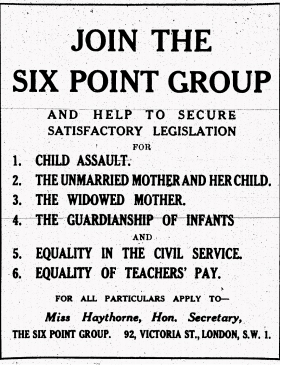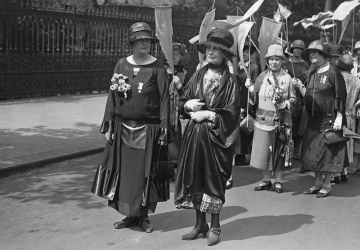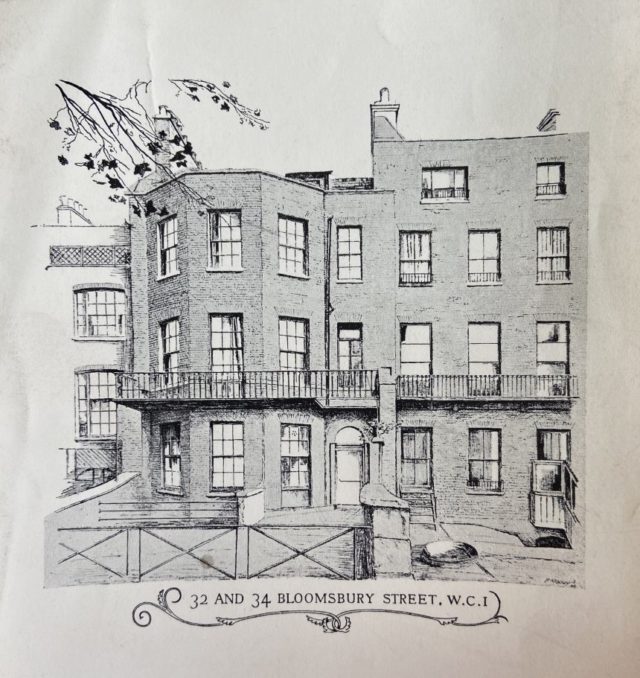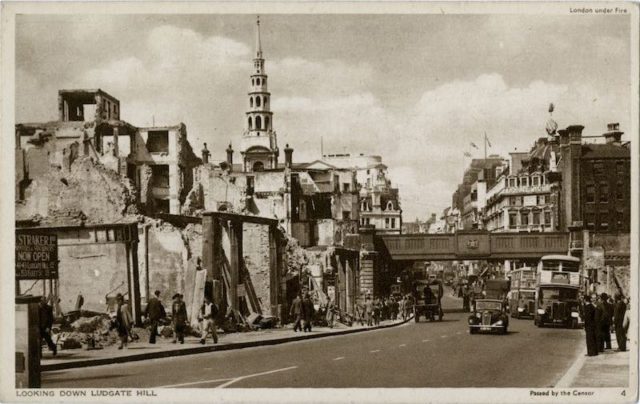
History of Time and Tide
Take a trip through time and discover the history of this landmark feminist magazine.
Founded in the wake of the First World War and the 1918 Representation of the People Act which extended voting rights to (some) women, Time and Tide offered weekly coverage of politics and the arts from a feminist standpoint.
Here are some key milestones of this magazine across its first two decades: the richest years for exploring Time and Tide’s commitment to feminism and women’s writing.
1920
Launch of time and tide
Time and Tide publishes its first issue on 14 May. The magazine’s founding directors include Lady Rhondda (Vice-Chairman), Mona Chalmers Watson (Chairman), Elizabeth Robins, and Helen Archdale, who would become Time and Tide’s editor until 1926. The composition of the board changed over time and by December 1927 included among its members Cicely Hamilton, Rebecca West, Winifred Cullis, Winifred Holtby and E. M. Delafield.
1921
The Six Point Group
In February, Time and Tide announces the establishment of the Six Point Group, Britain’s leading equal rights feminist organisation during the interwar years. The group’s aims had been outlined in Time and Tide the previous November, in a six-point ‘Women’s Programme.’ Although not the SPG’s official mouthpiece, the magazine publicises its events and supports its campaigns.

1926
A New Editor
This summer, Lady Rhondda replaces Helen Archdale as Time and Tide’s editor. Rhondda chaired the Equal Rights Demonstration Committee which organised a mass demonstration at Hyde Park on 3 July, widely publicised in Time and Tide’s pages. Lady Rhondda marches alongside the veteran suffragette leader Emmeline Pankhurst.

1928
Size and Price increase
In October, three months after the passage of the Representation of the People (Equal Franchise) Act which gave women equal voting rights with men, Time and Tide rebrands itself as a less woman-focused, more general-audience weekly review. Its increase in size (24 to 32 pages) and price (4d to 6d) brings it into line with Britain’s leading weeklies, such as the New Statesman.
1929
Bloomsbury
In May, Time and Tide moves from 88 Fleet Street to ‘a house of its own’ at 32 Bloomsbury Street. The magazine’s literary content increases: it publishes more book reviews, and extracts from Bloomsbury writer Virginia Woolf’s A Room of One’s Own (1929).

1931
Foreign Affairs
In May, Time and Tide incorporates as a monthly supplement the international news journal Foreign Affairs edited by leading peace campaigner Norman Angell. This development is indicative of Time and Tide’s expansion, during the 1930s, in the traditionally male territory of foreign policy and international affairs.
1935
LITERARY EDITORS
In October, the highbrow critic Theodora Bosanquet is appointed Time and Tide’s literary editor following the brief succession of two male literary editors, R. Ellis Roberts and John Beevers, in 1933 and 1934. Bosanquet holds this position until 1943, when she is succeeded by the historian Cicely Veronica Wedgwood.
1939
WAR
Time and Tide remains in print throughout the Second World War, although paper shortages force a reduction in format. In August 1940, Lady Rhondda is included on Hitler’s blacklist of people to be arrested after Germany’s successful invasion of Britain, along with Time and Tide writers Rose Macaulay, Rebecca West, and Ellen Wilkinson.

POST-1945
WHAT HAPPENED NEXT?
After the war, Time and Tide moved politically to the right and gradually ceded control to male figures who by the mid-1950s outnumbered women on its board and occupied key staff positions. Following Lady Rhondda’s death in 1958 the magazine changed owners several times and published its last issue in July 1979. Time and Tide had by this point travelled a very long way from its feminist origins, a shift in outlook which highlights the magazine’s importance for women’s writing and feminism between the two world wars.